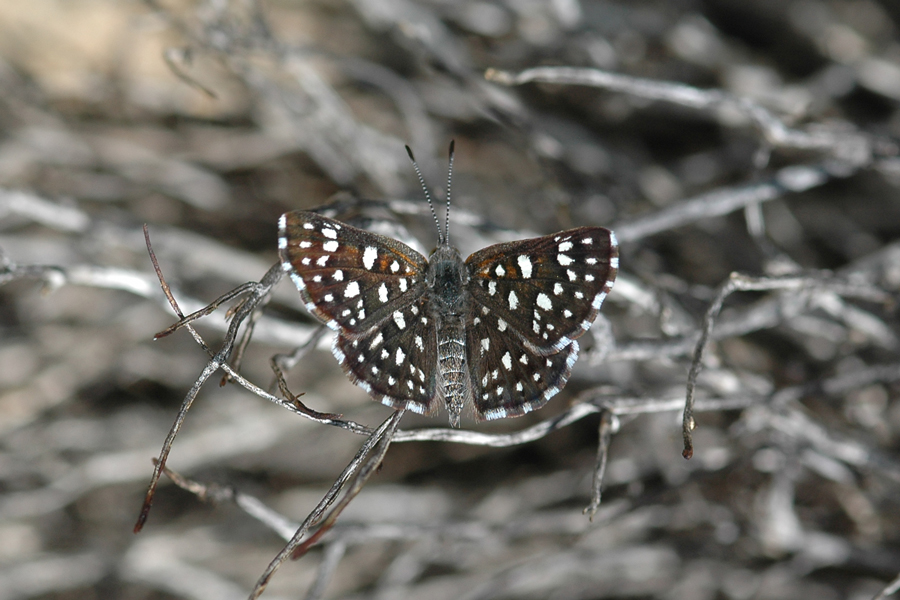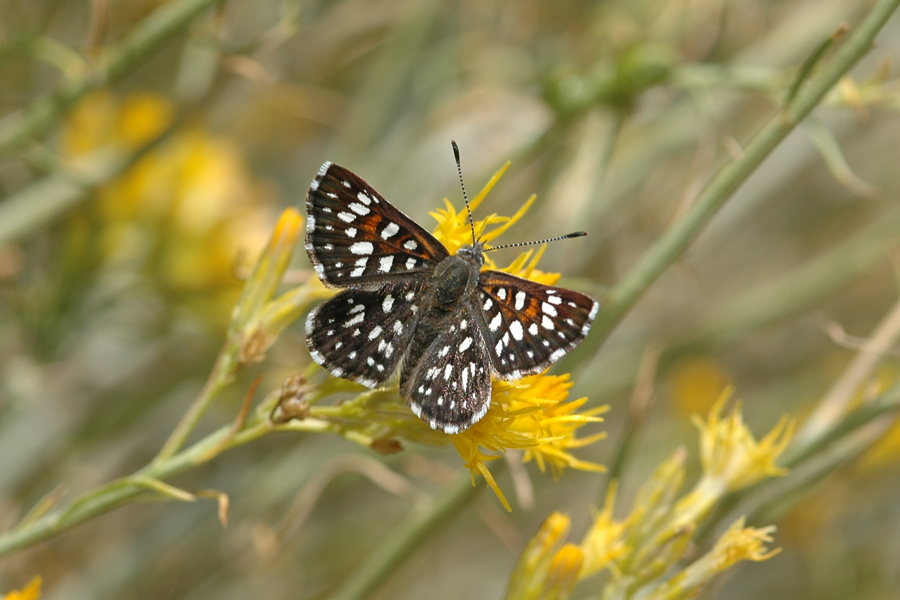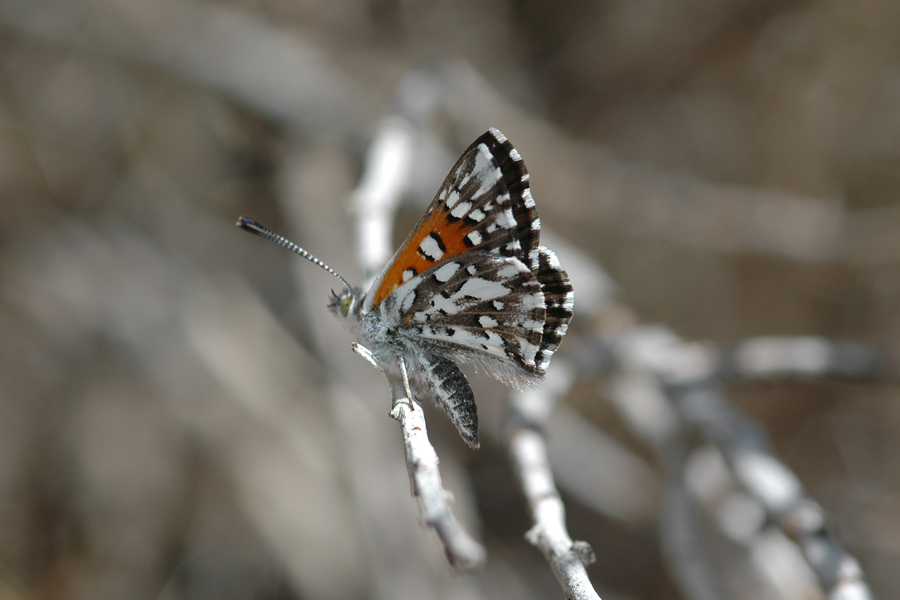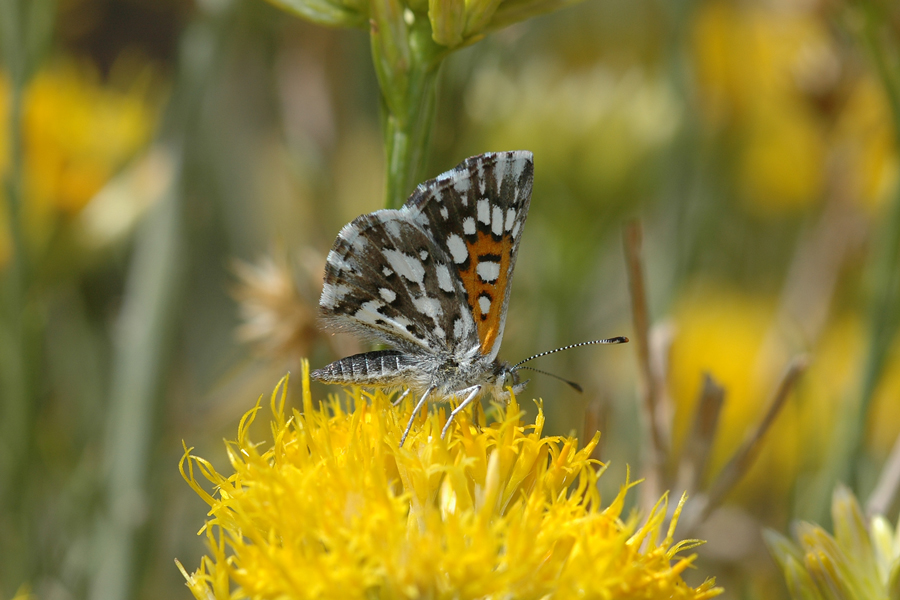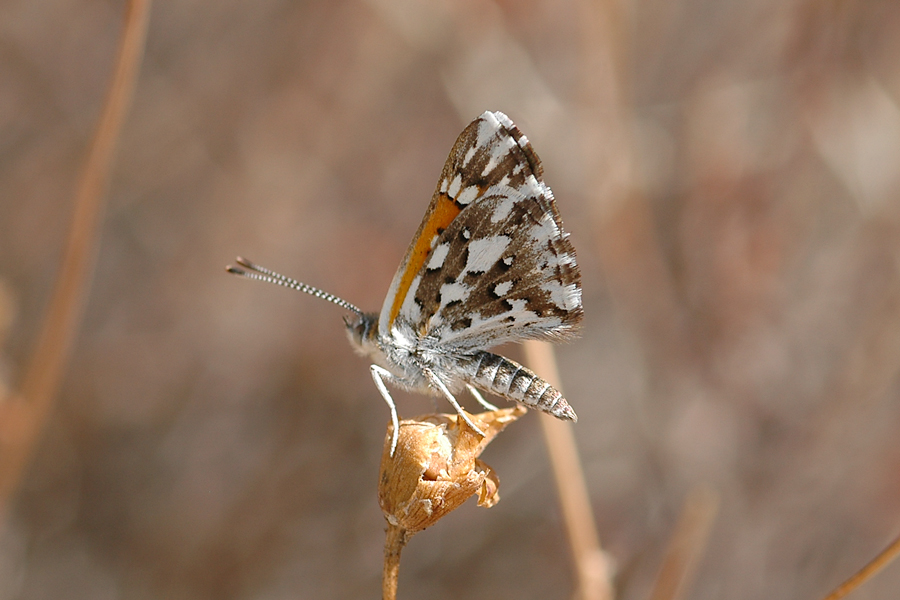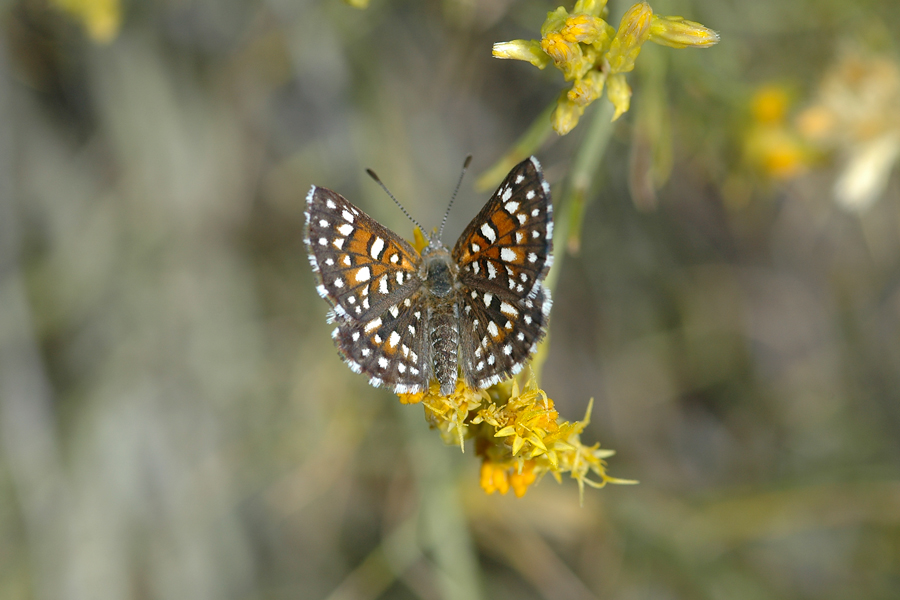Apodemia mormo nr mormo
Mormon Metalmark
In the vicinity of Wildhorse Meadow and Onyx Peak, southeast of Big Bear Lake, there is a very dark mormo around patches of Wright's buckwheat, Eriogonum wrightii var. subscaposum. It flies in a single brood around September. This area appears to be one end of a large cline with, perhaps, the very bright mormo cythera (or tuolumnensis) populations at the other end, and a large blend zone with a mix of phenotypes in between. According to John Emmel (via email in 2017): "Just east of Van Dusen Canyon you get into a large blend zone with A. mormo near mormo. On the slope NW of Baldwin Lake you can collect a broad range of phenotypes. Here it is associated with Eriogonum fasciculatum as well as E. wrightii. There is Eriogonum kennedyi in the area also and likely this is used as well." In the landmark "Three Biotypes" paper by Gordon Pratt and Greg Ballmer, however, the authors have cythera and mormo north of the San Gabriels and San Bernardinos, with cythera continuing north to the eastern side of the Sierra Nevada. To the east, in the desert mountains (Little San Bernardinos, Old Woman, New York, Providence, Hackberry, and Westgard pass) we have the mormo mormo phenotype; up at Hunter Mountain, the Cosos, and Inyos, it is cythera. To the south, this phenotype is present in the San Jacintos at Black Mountain. The relationship between these fall-flying mormo populations is something we'll have to work out. But besides the life cycle differing from other nearby metalmarks, these also have a larger egg. And no wonder: they spend much of the year in the egg, while sympatric spring flyers emerge in about 15 days and spend most of their life as larvae. The differences are real, even if appearances don't always reflect them.
